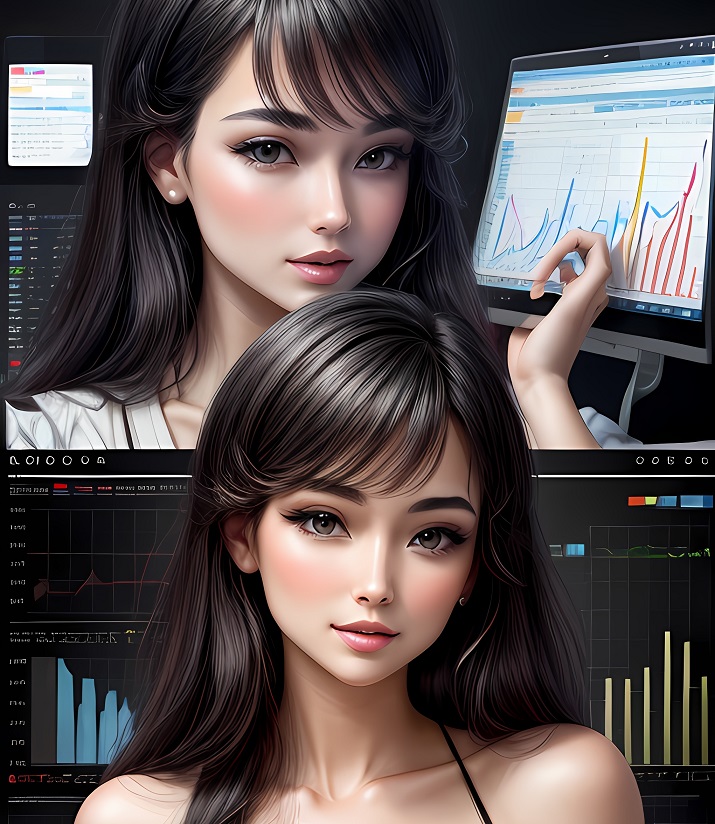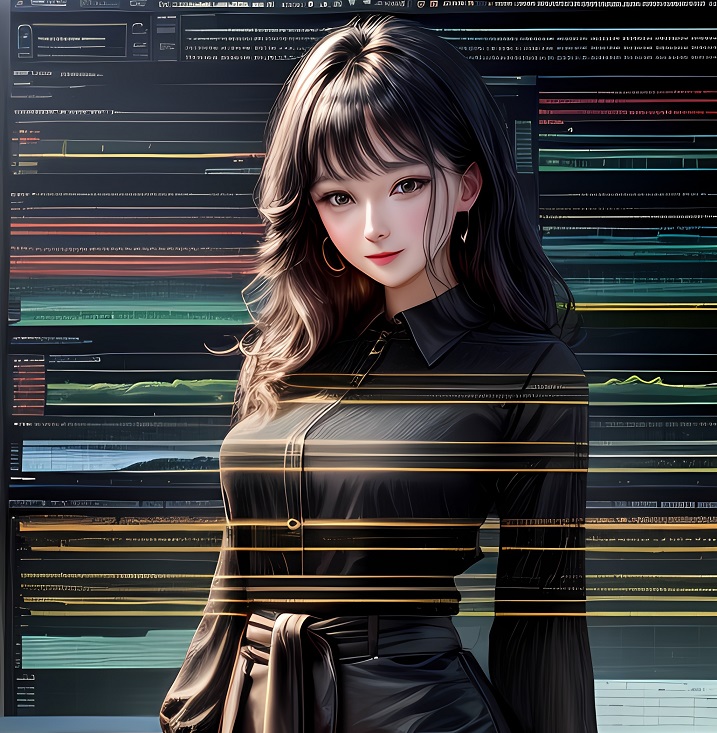How to apply the order management software to manage handicraft business?

Order management software is a collection of current management technologies and management concepts. It is a software for enterprises to manage their employees' daily work and monitor their work effects. After all, the 21st century is the age of network economy and e-commerce information, and traditional management obviously cannot meet the needs of actual development. The integrated data operation of e-commerce management system, online order system, WeChat marketing system, B2B distribution mall, B2B2C online mall system, WeChat mall system and APP mall system provides convenient management functions for commodities, inventory, transactions, etc. Online and resources The management system is seamlessly connected, and orders can be placed anytime and anywhere, realizing online and offline integration. Multi-level BOM management, no matter how complicated the BOM is, we will store and manage it for you at any time, call it at any time, simulate production, automatically calculate the raw materials required for production, and calculate how many finished products can be made according to the number of raw materials. What are the functions and advantages of order management software?
Order management software is workflow-oriented, emphasizing the pre-control capability of enterprise management, and taking finance, manufacturing management, sales management, logistics management, inventory management, procurement management and human resources as a dynamic and pre-controllable organic whole.
LongRiverTech order management software observes and manages the operation of handicraft companies from many different angles, such as: sales angle, customer angle, production circulation angle, product angle, etc., to achieve the optimal combination of corporate profit goals and to meet category, use, etc. Industry demand. Since LongRiverTech released its first ERP product in 2017, LongRiverTech has continued to invest resources in the continuous iteration and evolution of order management software. In 2019, the first enterprise version based on B/S web architecture was released, which supports cloud deployment and operation. LongRiverTech order management software is committed to helping the development of the Industrial Internet, Industry 4.0 and the new economy of intelligent manufacturing. LongRiverTech ERP is a one-stop ERP system for small and medium-sized enterprises, which can be personalized business customization, cloud platform deployment, etc. In 2021, LongRiverTech released the first cloud service brand "Hanju", providing a brand-new SaaS operating environment and business model for the release and service of subsequent ERP products and order management software.
LongRiverTech production management includes: BOM, processing cost accounting, material tracking, and can meet the special industry needs of the category, use, etc..
The design is simple and elegant, and the cloud resource management suitable for start-up companies can independently deploy databases according to customers and automatically upgrade new versions. The order management system is flexible and diverse, automatically splits and merges orders, and supports multiple marketing strategies such as pre-sales and buy gifts. Through the order management software cloud platform, the batch processing of orders is efficient, and the standardized product file management makes the product systematized. Multi-level sub-warehousing management in different places, accurate synchronization of inventory across the platform, inspection, inventory, and allocation of goods in one step, intelligent generation of purchased goods and quantities, and alert inventory reminders to prevent stockpiling or out-of-stock. The credit limit control and accounts receivable management system provides rigorous credit limit management, and the credit limit judgment completely covers the customer's transaction process, including order, shipment, checkout, invoice payment, and cashing. After the shipment is settled, the system can provide accounts receivable (corresponding to shipment details) and payment details according to the customer or salesperson at any time to facilitate account reconciliation. Aging analysis can be provided at any time, or the system's early warning function can automatically give a warning to the overdue time. Engineering enterprise management system-material management specifically includes: material planning, material contract, material storage, material settlement, material payment, material delivery, material inventory, material allocation, initial inventory, and material report. Order management software operation interface of the management system is extremely simple. Multi-brand operation system Multi-brand management takes the multi-brand complex operation mode as the premise, realizes the transformation of coding rules between brands, the establishment of price system, the distribution of authority, and realizes the management of multiple brands on the same platform. The one-stop informatization solution cooperates with personalized office internal communication, quick information release, automated document management, transparent employee attendance, and diversified process forms to help enterprises realize mobile, efficient and smart management.

LongRiverTech order management software staff maintenance includes: operators, salesmen, managers. LongRiverTech order management software requisition and return includes: requisition form and requisition form. Practical order management software usually also needs to support the statistical report function of processing and manufacturing, such as viewing processing flow, product profit, BOM profit, process profit, group profit, operator profit, and customer profit.
Order management software BOM management conducts centralized maintenance and control on BOM establishment, transfer, change, settlement and other links through integrated management of bill of materials. Document management: conduct custom classification management on business and office documents of various departments of the company. Many enterprises are inefficient when they do not have resource management, and the materials cannot keep up, and customers are reminded every day. The quality is poor, the quality is mixed, and there is no clue of accountability. The profit is small, there is no profit at the end of the year, and the check of the accounts is at a loss. Account reconciliation is slow, the boss wants a report, but can't give it in a few days. But after using a set of resource management products, there are new problems, such as: the operation is inconvenient, the employees are very resistant, cannot customize, the operation is not user-friendly, only sells software but no service, waste of money, tens of thousands at every turn , Burning money has no effect. In fact, enterprise management software is by no means a simple launch of a ready-made product, and more needs to be customized and developed according to the actual business of the enterprise. The ready-made product is just a collection of cases that meet most industries and enterprises, which is convenient for enterprises to choose templates from and use them As a starting point, customize and develop the module functions of the enterprise's own business. The bill of materials is an important document that is indispensable for receiving customer orders, selecting assembly, calculating the cumulative lead time, preparing production and procurement plans, matching materials, tracking logistics, tracing tasks, calculating costs, and changing cost designs. The above work involves the sales of enterprises , planning, production, supply, cost, design, process and other departments. Therefore, there is also this saying that BOM is not only a technical document, but also a management document. It is the link to contact and communicate with various departments. All departments of the enterprise must use the BOM table. The basic characteristics of resource management are: arrange material supply and production planning according to demand and forecast, and propose what is needed, the time and quantity needed. The management object of the resource management method is mainly the materials with relevant needs in the manufacturing industry, so the basic content that should be included in the product database is the item master file (Item) and the product structure list (BOM). According to the master production plan and BOM, the gross demand for materials at all levels can be calculated, and the dynamic net demand for materials can be calculated by considering the existing inventory and production volume, which generates the materials required by the production schedule Demand Planning - MRP (Material Requirement Planning). The bill of materials is different from the product parts list that we are familiar with, mainly in the following aspects: (1). Each material on the bill of materials has its unique code, that is, the material number, which is very clear about the material it constitutes . There are no such strict regulations for general parts indicating fine watches. Parts schedules attached to individual products do not necessarily take into account the uniqueness of the material coding of the entire enterprise. (2). The hierarchical relationship of parts and departments in the bill of materials must reflect the actual assembly process. Some assemblies on the drawings may not necessarily appear in the actual assembly process, but may also appear on the bill of materials. (3). The bill of materials should include the raw materials, blanks and some consumables required by the product, and the finished product rate should also be considered. The parts schedule does not include materials that do not appear on the drawings, nor does it reflect the consumption quota of materials. The bill of materials is mainly used for planning and control, so all planning objects can be included in the bill of materials in principle. (4). According to the needs of management, several different shapes of a part, such as casting and forging blanks and processed parts, processed parts and repainted parts with different colors, should be given different shapes in the bill of materials. Coded for differentiation and management. Parts schedules are generally not handled this way. (5). What materials should be listed on the material list is very flexible and can be completely defined by the user. For example, in addition to the raw material steel plate, a special mold is required to process a certain stamping part. When establishing the bill of materials, you can hang the mold as an outsourced part on the lower layer of the stamping part, and its quantitative relationship with the stamping part is the mold consumption quota. (6). The order of a master sub-component in the bill of materials should reflect the order of assembly of each component, while the order of the part numbers on the parts schedule is mainly for the convenience of viewing the diagram. Order management software cloud platform deeply integrates the core SAAS applications of enterprises in the mode of industrial interconnection, helps enterprises realize industrial collaboration, data interconnection, and business interoperability, and helps finance, HR, personnel and other management personnel work more efficiently by 30%. Master the precise operation data of the enterprise anytime, anywhere, and assist the boss to make appropriate decisions. In the field of enterprise cloud computing, there are usually different professional cloud services for the industrial Internet for different businesses, such as: new retail cloud, collaborative office OA cloud, traditional financial cloud, smart financial cloud, supply chain cloud, manufacturing cloud, global Channel cloud, HR cloud, e-commerce cloud, cross-border e-commerce cloud, order cloud, project cloud, etc. The new generation of digital enterprises comprehensively utilize and integrate multiple clouds to promote industrial upgrading.
Small and medium-sized handicraft enterprises focus on production and processing to drive upstream procurement and downstream order management. The conventional order management software satisfies the large-scale production management of batch products. Mass-produced products with a high degree of standardization can quickly reach saturation through large-scale expansion, leaving a lot of room for growth in non-standard orders that require individual customization. For more innovative non-standard orders, it is increasingly dependent on the auxiliary management of computer systems to cope with the explosive growth of business data. LongRiverTech sales management is the most important business module of order management software, including functions: sales order, sales return order, retail order, retail return order, sales invoicing, business documents, quotation list configuration, retail price list, sales plan , approval and tracking, sales order, sales delivery plan, customer quotation and transaction price, customer contract. LongRiverTech statistical report functions include: business flow, purchase report, sales report, inventory report, processing report, and capital report. Order management software processing and manufacturing functions include: BOM configuration, batch accounting, processing cost list, assembly and disassembly, product valuation adjustment list, process configuration and batch tracking, customer incoming material list, material picking list, material return list, finished product Warehousing order, delivery order, process materials and task execution, semi-finished product production order, real-time production order. LongRiverTech order management software supports both our single account and our multiple accounts.

Through the custom-developed order management software, it solves the complex problem of storage management for small and medium-sized enterprises, and manages intelligent storage easily. Order management software financial management usually includes: basic financial information, opening balance input, receivable and payable business, voucher entry synchronization, financial entry, financial statements, etc. The omni-channel O2O product system has a clear structure, stable and flexible settings, rich functions, fast recording, standardized and process-based management, independent applications, and personalized display. Efficiency improvement: For follow-up logistics, delivery, quality inspection, etc., you can directly see the work allocation of each department from the system. For example, if a customer needs the same clothing as last year, the staff can directly query from the system to find out the latest measurement record for the customer to confirm, avoiding the cost and time of repeated measurement, improving efficiency and saving costs. If it is still a paper-based record, it is difficult to reuse historical data records. Now, invoicing in logistics management, on-time production completion in production order management, process control in procurement management, and finished product warehousing management in barcode management can all play a role. The BOM bill of materials, that is, a file that describes the product structure in a data format, is a product structure data file that can be recognized by a computer, and is also a leading file for resource management. BOM enables the system to identify the product structure, and is also the link to connect and communicate with various businesses of the enterprise. The types of BOM in the resource management system mainly include 5 categories: indented BOM, summarized BOM, reverse check BOM, cost BOM, and planned BOM.
Operation loss includes coordination loss between departments and between positions, as well as logistics loss in the production process. Through order management software to reduce operating losses, reduce costs and increase efficiency, so that enterprises can obtain more profits and market competitive advantages.